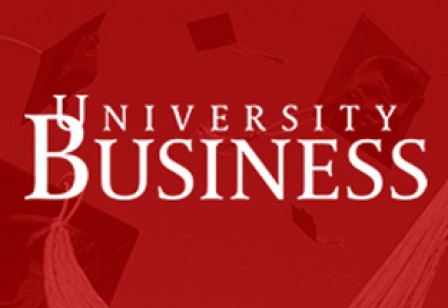Creating preference. It’s not just about league tables - University Business
As featured in University Business, by Max du Bois.
For too long, universities have been judging themselves – and expecting others to judge them by – their position in the academic league tables. As a result, league tables have become of obsessional importance to academics and university PR departments. Yet to the world outside, league tables are not the only, and may not even be the principal, reason for preference.
By concentrating on league tables at the expense of their more valuable assets, the university sector is at risk of destroying its ability to connect with its audiences at an emotional level. A university is a highly-complex entity. Apart from educating and nurturing its students, it has to satisfy the Department for Education, and attract staff as well as research and grants from industry. It also has to compete both for students and other sources of funding.
With the number of universities increasing, competition has become fiercer. A situation which has been made worse by the demise of the grants system. Will a university – apart from paying back for the time, effort and commitment involved – give a substantial return on the heavy financial investment made? And if so, which one?
As a result we are seeing an increase in university branding. However there appears to be some confusion relating to the true definition of transformational branding versus a mere logo. As all corporate organisations will agree, a brand defines not just what, but who they are. It conveys their core offering as well as the ‘feel’ and personality of the organisation and how they are seen both externally and internally.
A strong, strategic brand exists not simply to put over an argument, but to create emotional engagement between itself – in this case an educational institution – and its target audiences. Universities, with their built-in associations, atmospheres and experiences – as well as their moral imperative to exist – have a distinctly rich source of a brand positioning. They should thrive on their individuality, yet they all subscribe to the same positioning and messages – and these include a heavy emphasis on league tables at the expense of these important factors.
Universities have to address – and create preference – in many different minds, with many different priorities and motivations, from potential students and their parents, to schools careers teachers, alumni and institutions such as the Department for Education, to mention but a few. The sum of these different need-states require universities to design tailored and relevant messages, all contained within a complex communication strategy, encapsulated within a single, powerful brand entity.
A brand’s constituents are always divided into the rational and the emotional. And while university staff will tend to concentrate primarily on rational benefits, for individuals the picture is more mixed.
Choice – especially between broadly similar offerings – is driven by emotional, rather than rational, criteria. Of course, there remains the rational side of the equation: “where does it stand in the tables?” “What are its resources and facilities?” But emotional issues also come into play: “Will it be safe?” “Will I feel proud of being there?” It is questions like these that drive choice, engagement and preference – and they have little to do with, and go beyond, the logo design or the university’s place in the league tables.
Rational, factual statements and claims are often no more than a way of narrowing down a bewildering set of options. League tables can and do provide a rational underpinning of what a university offers, but they are only a start. They are no more than a tool for prospective students to discard some options rather than a route to a positive choice. And league tables themselves can be confusing, especially where a number of institutions are ‘bunched’ together in the league.
In this complex scenario, how can potential students and their families make a choice, and how can a university uncover its difficult-to-define, yet essential, individuality? It comes back to the emotional connections that the university brand makes – or fails to make.
Many corporate and consumer brands address this issue via the age-old process of storytelling. We retain a story in our minds far longer than the mere recitation of facts. And any university will be rich in anecdote. How did it come into being? What was its founding philosophy? What is it like to study – and teach – there? It is by storytelling and anecdote that an amorphous institution like a university can engage all its stakeholders and reveal the essential ‘brand truth’ that will give it true individuality and create preference.
With over 500,000 students each year making that all-important decision, differentiation now has to shift beyond just league tables, and into the emotional realm of communication.
Universities don’t stand out because of how they perform in league tables. They stand out by the values and experiences they represent, and only powerful, effective brand stories can truly convey this.





